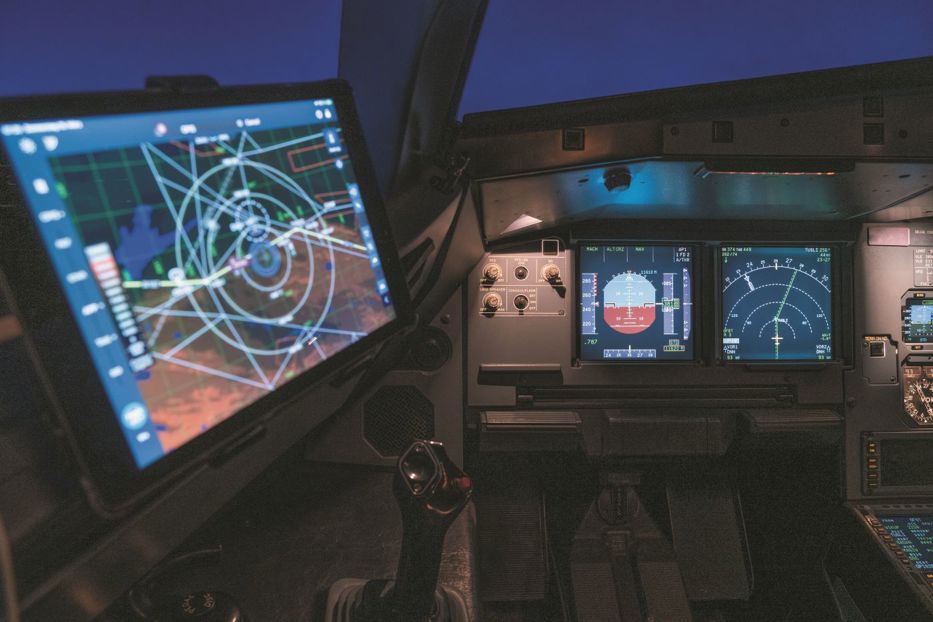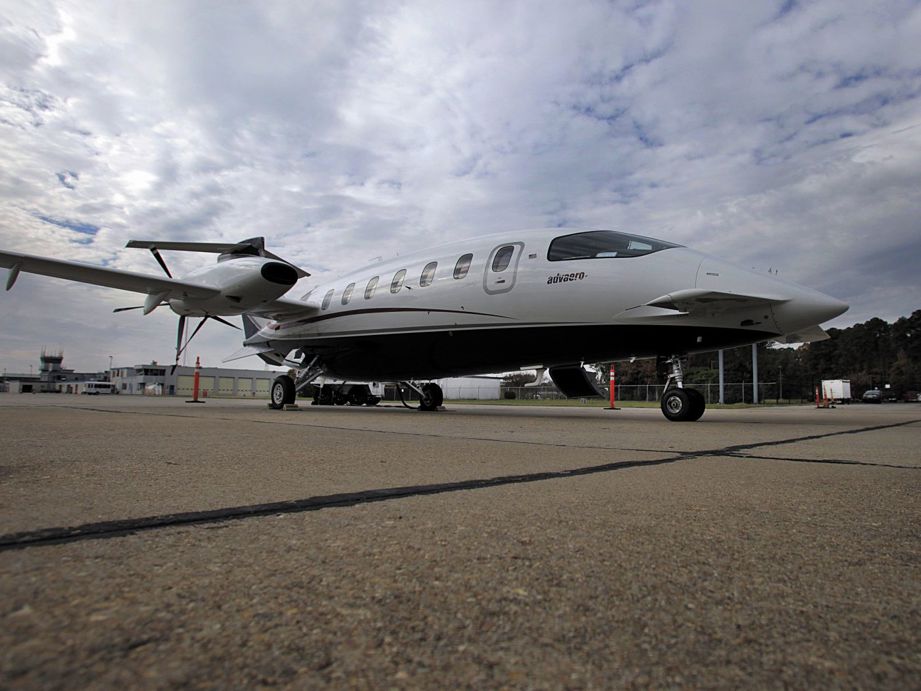
The aviation industry is examining the possibility of adding digital flight capabilities to share airspace with Instrumented Flight Rules and Visual Flight Rules traffic. If the FAA signs on, it could result in a third routine operating mode available to all qualified operators for use throughout the airspace.
The latest of several NASA papers on the subject, “Digital Flight: A New Cooperative Operating Mode to Complement VFR and IFR” envisions digital flight coexisting with conventional air traffic. Aircraft flying under IFR and VFR might also benefit from some of the novel communications, navigation and surveillance (CNS) technologies and automation-enabled capabilities now coming quickly to the fore.
Unmanned platforms without pilots lack what humans bring to flight operations – the ability to see and avoid using the human eye under VFR, or a human pilot following clearances issued by human air traffic controllers under IFR.
“What we are exploring with digital flight is a new operating mode that is digital native,” says David J Wing, leader of digital flight research in the NASA Convergent Aeronautics Solutions (CAS) Project. “It is inherently designed not to rely on human situation awareness and human decision-making for traffic separation – although these can be part of the operation.
“At its core, digital flight is based on digital technology and digital information services. It would automate certain functions that have been traditionally performed by humans, either a pilot or a controller.”
Unmanned benefits
At NASA, Wing has been researching flight path management automation, self-separation technologies and procedures and technology roadmaps for future operational autonomy.
Some eVTOL aircraft may initially fly with pilots aboard in corridors within urban areas, under air traffic control supervision. But proponents of UAVs and uncrewed aircraft for passengers and cargo want to move the pilots to the ground. They also want to enable simultaneous multiple supervision of multiple aircraft. Automation capable of self-separation can help make this vision viable in the long term.
High-speed data communications relying on frequencies new to aviation will share real-time information to help keep everyone apart from one another. A digital flight aircraft would self-separate from other digital flight aircraft as well as from both IFR and VFR traffic and would share its flight path intent while doing so.
The industry and the FAA must partner to achieve such a goal, while NASA develops concepts and technologies that can solve problems. Several of the co-authors of the latest NASA paper do not think uncrewed aircraft can reach their full potential without something like digital flight. They believe that existing IFR and VFR operating modes will not be able to cope with the volume of hundreds or thousands of uncrewed aircraft in operation within a single metro area.
ATC sectors in busy areas like those near New York City can currently only accommodate a few dozen IFR aircraft at a time.
“There is a lot of R&D work that needs to be done so we can do this at scale,” says Wing.
Wing has three decades of research experience at NASA and the CAS Project, which launched in 2016 has been conducting industry workshops and publishing research on digital flight. Plans include modeling, simulation and flight evaluation, along with safety analyses and more industry workshops.
“IFR and VFR are great models because they are routine operating modes used in much of the airspace by a wide diversity of operators and aircraft types,” says Wing. “But they depend on the human role in decision-making. This inherently limits the potential of IFR and VFR to meet the needs of new entrants.”
Wing notes that the option to fly under IFR or VFR will continue to be available and that digital flights will have to meet or exceed IFR and VFR safety standards. This would mean certifying the key algorithms in use or using a similar model to a Traffic Collision Avoidance System (TCAS) by having the government provide the algorithms needed.

Industry involvement
The aviation industry is also getting involved in evaluating digital flight. In November 2022, the RTCA (Radio Technical Commission for Aeronautics) created a forum to develop a framework for aircraft and system requirements needed to support digital flight operations for Urban Air Mobility (UAM) and Advanced Air Mobility (AAM).
The forum aims to make these operations safe and efficient for passengers and cargo on flights at lower altitudes. Industry consensus is needed to move ahead with these plans, protecting current users of the airspace while making room for new entrants to operate safely.
The RTCA forum is led by Brandon Suarez, vice president of uncrewed aircraft systems integration at Reliable Robotics. The forum is looking at the potential requirements and procedures needed for digital flight operations including CNS and infrastructure, as well as performance standards. It will develop a concept of operations, a roadmap and timelines for UAM and AAM.
Wing says digital flight will be performance based, not an equipment-based solution. There will likely be different tiers of performance with more stringent ones required for higher-risk operations.
Right-of-way rules and other cooperative practices will be encoded into automation for digital flight so they will be consistently and reliably applied. Aeronautical right-of-way regulations originate from rules used by ships at sea in the 1890s.
“All you can do now is maintain your heading or turn right and know that a landing aircraft has the right of way,” says John Maris, CEO of Advanced Aerospace Solutions. He is a test pilot and co-author of the NASA digital flight paper. “For many types of operations including UAM current right-of-way rules may not work.”
Digital flight is a concept that may be of use in an Info-Centric NAS (National Airspace System), an architecture being pursued by the FAA. This topology envisions a fully integrated information regime with interoperable sharing of information. Tucked under the FAA’s Info-Centric NAS umbrella are operational scenarios including UAS traffic management (UTM) concepts and engineering, multi-regional trajectory-based operations (TBO) and an airspace traffic management concept of operations for Class Upper E airspace above 60,000ft. Upper E is where aircraft with widely varying performance such as high-altitude balloons and supersonic aircraft need to co-exist.
“With the Info-Centric NAS you see a lot in common with what we are exploring with digital flight research,” says Wing. NASA tests new technologies and concepts of operation while the FAA promulgates the rules and regulations needed to usher novel air vehicles and methods of operation into the NAS. “We don’t intend to get ahead of the FAA’s decision-making,” says Wing.
Implementation
Digital flight will not start all at once. Early digital flight-aligned applications under VFR and IFR can apply some limited sharing of information and procedures to gather operational data to inform standards development. “The technology can mature through this type of operational use of digital flight technologies and services in an advisory role,” Wing says.
Wing also led the Traffic Aware Strategic Aircrew Requests (TASAR) research project for Langley’s Crew Systems and Aviation Operations Branch. TASAR began in 2012, building on aircraft autonomy research led by NASA’s Mark Ballin. He has spent most of his NASA career working on the modernization of the NAS. In 2015, TASAR became a research partnership between NASA and Alaska Airlines using NASA’s Traffic Aware Planner (TAP) software advisory system to optimize flight paths. Ballin and Wing are holders of the TASAR patent.

TAP was evaluated on three Alaska Airlines aircraft in TASAR operational trials for eight months in 2018 and 2019. The software runs on an electronic flight bag system in the aircraft. TAP connects to data sources for convective weather polygons, three-dimensional gridded winds, and restricted airspace status. It uses ADS-B In data to deconflict flight path optimizations before the pilot’s reroute request to ATC. As such, TASAR is a precursor to digital flight.
TAP software analyzes 400 to 800 reroutes per minute to determine the most fuel efficient route. The best available reroutes are queued up once per minute making it easy to review and select an option. TAP was selected as NASA software of the Year in 2016 and received the International R&D 100 Award in 2019. The software was developed under contract to NASA by Engility Corporation supported by Stinger Ghaffarian Technologies. Seattle-based APiJET, a leader in connected real-time flight intelligence, has licensed the technology and has developed the first commercial TASAR application called Digital Winglets.
On average, Wing said early simulations showed that airlines might save 400 to 500 lbs (180 to 225kg) of fuel and four minutes of flying time on a typical flight. During one of the first Alaska Airlines TASAR flights, TAP computed a reroute that saved roughly 1,800 lbs (816kg) of fuel and 12 minutes.
“Having a truly rich set of real-time data to use for decision-making after departure is where the game-changing capabilities of the TAP come into play,” says Captain Bret Peyton, who is now a managing director at Alaska Airlines. He adds that the partnership with NASA has helped his airline develop expertise on commercial airliner route optimization.
NASA also conducted 60 hours of TASAR flight testing in 2013 and 2015 up and down the Eastern Seaboard of the USA from Florida to Boston flying a Piaggio Avanti P.180 flight test aircraft owned and operated by Advanced Aerospace Solutions. The Avanti is well suited to flight testing because it has a large cabin for flight test engineers. It is pressurized and can cruise at 425mph (1,500km/h) and as high as 41,000ft. Collins Aerospace performed analyses for NASA of TASAR certification and operational approval requirements.
The Avanti flight test campaign, as well as the Alaska Airlines trials, is summarized in “The TASAR Project: Launching Aviation on an Optimized Route Toward Aircraft Autonomy” a NASA Langley paper by Wing. He states in the paper, “TASAR was developed as a catalyst for operational autonomy, a future vision where the responsibilities and authorities of trajectory management reside with the aircraft operator and are distributed among participating aircraft, thus fulfilling a vision dating back decades and enabling a fully scalable airspace system.”
Unmanned rules
Bill Cotton, a consultant and former chief technical pilot at United Airlines also worked with Wing in developing the concepts for digital flight and was involved in the TASAR flight testing.
“Digital flight is another means of assuring separation while operating in all classes of airspace,” he says. “It is very valuable to every type of user. NASA believes digital flight is essential for some types of unmanned aircraft operators. Then they can share the airspace without having to segregate it in terms of the types of operations and use.”
Smaller separation will be possible with digital flight and Cotton said this will greatly reduce the potential for conflicts. But nothing will happen until the technology is ready.
Ruth Stilwell, executive director of Aerospace Policy Solutions is a consultant and former air traffic controller who also contributed to the CAS Project’s digital flight effort. She says that IFR flight has evolved started in 1929, when US Army test pilot Jimmy Doolittle took off, flew and landed solely by reference to aircraft instruments. She believes digital flight will develop similarly, starting with a large safety buffer that is reduced as the industry masters basic applications of digital flight and moves to more elaborate ones.
What is digital flight?
Digital Flight is a proposed new operating mode for all airspace users, which complements and adds to the existing operating modes of visual and instrument flight rules (VFR and IFR) and provides for cooperative integration in controlled airspace. Under Digital Flight Rules users enhance their airspace access and operational flexibility in all visibility conditions and eventually all airspace classes, without requiring segregation from incumbent operations.
